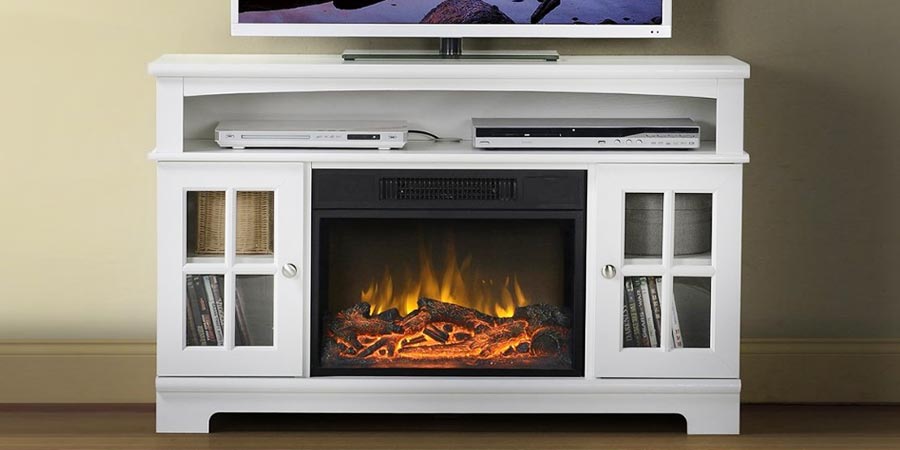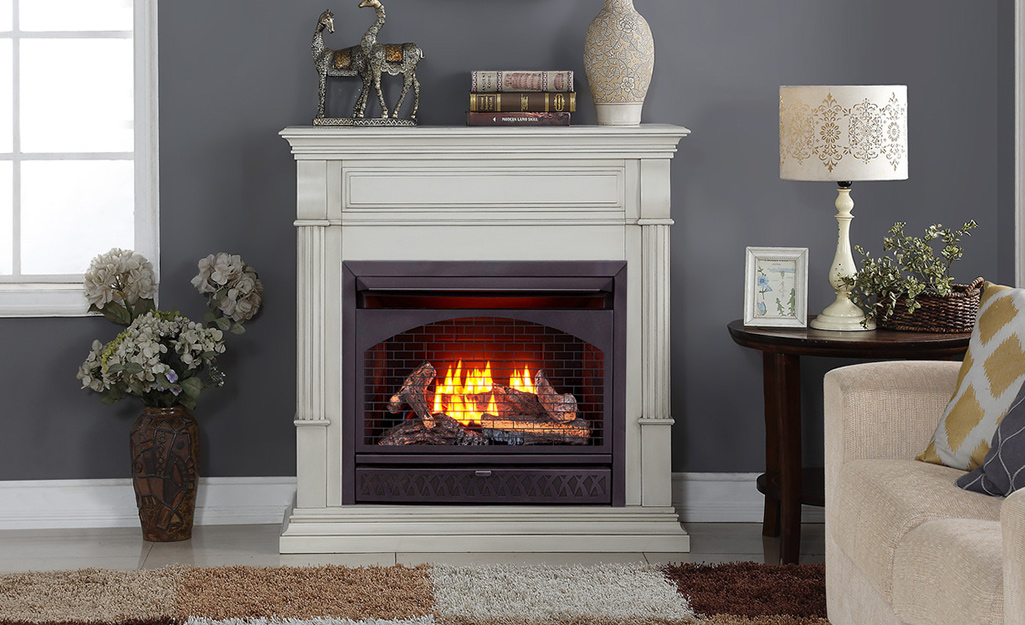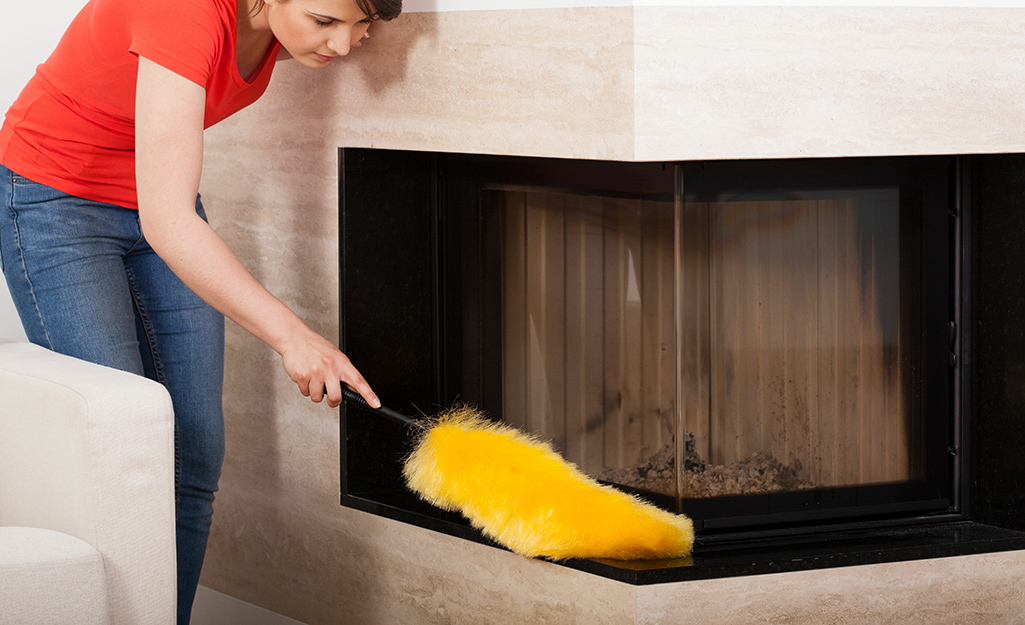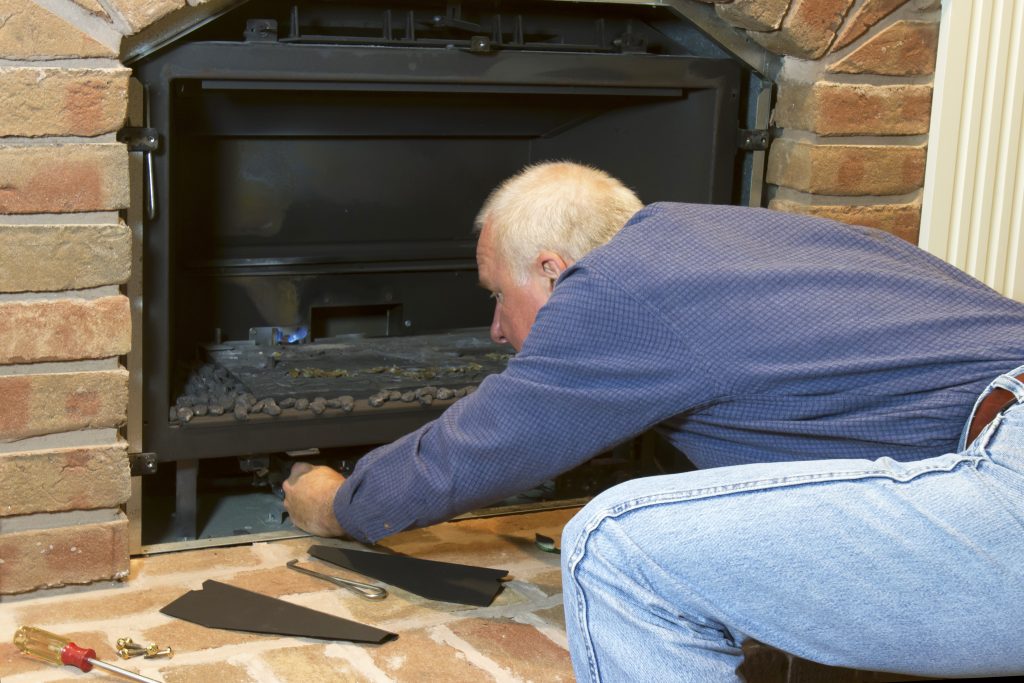Electric Fireplace Maintenance
Electric fireplaces are an attractive and convenient alternative to traditional wood-burning or gas fireplaces. They offer warmth and ambiance with minimal setup, making them an excellent choice for homeowners looking for a low-maintenance option. However, to keep your electric fireplace running efficiently and looking its best, regular maintenance is essential. Below are the key aspects of electric fireplace maintenance, from cleaning and inspecting components to troubleshooting common issues and ensuring optimal safety.

Cleaning the Exterior and Glass Panels
One of the most important steps in maintaining an electric fireplace is keeping the exterior clean. Dust and dirt can accumulate on the surface over time, dulling the appearance of the fireplace and even affecting its operation if they clog vents or panels. Use a soft, damp cloth to gently wipe down the exterior surfaces, avoiding harsh chemicals that could damage the finish. For stubborn spots, a mild soap solution can be used, but always rinse with a damp cloth afterward to prevent residue buildup.
The glass panel on an electric fireplace also requires attention to maintain its clarity and brilliance. Over time, fingerprints, dust, and smudges can build up on the glass, diminishing the view of the flame effect. Clean the glass panel using a soft, lint-free cloth or paper towel with a gentle glass cleaner. Avoid using ammonia-based cleaners, as these can cause streaks and dull the glass. It’s best to let the fireplace cool down completely before cleaning the glass to avoid accidental burns.
In addition to keeping the fireplace looking clean, regular cleaning can help improve the efficiency and lifespan of the unit. Dusting the exterior vents and ensuring there are no obstructions helps the fireplace to ventilate properly, preventing overheating and extending its longevity. A clean and well-maintained exterior ensures your electric fireplace continues to be a stylish focal point in your home.

Inspecting the Interior Components
Inspecting the internal components of your electric fireplace is a crucial part of its maintenance. Although electric fireplaces do not require the same level of upkeep as traditional fireplaces, checking the interior parts periodically helps prevent potential issues. Begin by unplugging the unit to ensure your safety before opening the fireplace’s access panel. Look for any signs of wear on the wiring, lights, or heating elements, and ensure that everything is securely in place.
Pay particular attention to the heating element, as this is a critical part of the fireplace that enables it to produce warmth. If you notice any wear or damage on the heating element, it may need to be replaced to ensure the fireplace operates effectively. Additionally, many electric fireplaces use a fan to distribute heat; check that the fan is functioning correctly and is free of dust and debris. A noisy or malfunctioning fan may indicate the need for repair or replacement.
Another important component to inspect is the flame effect module or light bulb, which creates the realistic flame appearance. If the flames look dim or the bulb has burnt out, consult the manufacturer’s instructions for replacing it, as each model can differ. Regular inspection and maintenance of the interior components help to keep your electric fireplace operating smoothly, providing warmth and ambiance without interruption.

Checking and Replacing Light Bulbs
Most electric fireplaces use light bulbs to create the flickering flame effect, making these an essential part of the fireplace’s ambiance. Depending on the model, the bulbs used may be LED, halogen, or incandescent, each with a different lifespan and brightness. Regularly checking the light bulbs is a good habit, as a burnt-out bulb can dull the visual effect and reduce the charm of the fireplace. Generally, these bulbs should be inspected every few months, or whenever you notice a drop in brightness.
Replacing the light bulbs in an electric fireplace is relatively simple, but it’s crucial to consult the manufacturer’s manual to ensure you’re using the correct type and wattage. Using the wrong bulb could damage the unit or create a safety hazard. To replace a bulb, unplug the fireplace, open the access panel, and carefully remove the old bulb. Handle new bulbs with care, as oils from your fingers can cause hot spots and reduce their lifespan. It’s best to use gloves or a soft cloth when handling halogen or incandescent bulbs.
If your fireplace uses LED bulbs, you may not need to replace them as often since LEDs have a longer lifespan. However, it’s still a good idea to check periodically for any dimming or flickering. LED replacements are more energy-efficient and can reduce your electricity usage, making them a popular choice for electric fireplaces. By keeping the bulbs in top condition, you’ll ensure that your electric fireplace maintains its realistic, cozy flame effect for years to come.

Preventing Overheating and Ensuring Ventilation
Electric fireplaces are generally safe and designed to prevent overheating, but proper ventilation and temperature management are still necessary for optimal performance. Ensure the area around the fireplace is clear of obstructions that could block airflow, as this can lead to overheating. Avoid placing items directly on top of the fireplace, as this can trap heat and reduce efficiency. A well-ventilated fireplace not only operates better but is also less likely to experience issues related to excessive heat.
Many electric fireplaces come with an automatic shut-off feature that activates if the unit overheats. However, if you notice the fireplace shutting off frequently, this could be a sign of restricted airflow or a malfunction. Make sure the vents are free of dust and debris, as these can accumulate over time and impede airflow. If the problem persists, consider having a professional technician inspect the unit to identify any underlying issues.
Using the fireplace according to the manufacturer’s guidelines also helps prevent overheating. Avoid running the unit continuously at maximum heat, and consider turning it off periodically to allow it to cool down. Monitoring the temperature settings and ensuring proper ventilation are simple yet effective steps to maximize the efficiency and safety of your electric fireplace.

Troubleshooting Common Issues
Electric fireplaces are relatively low-maintenance, but they can still encounter issues from time to time. One common problem is the fireplace not turning on, which can often be resolved by checking the power source. Ensure that the fireplace is plugged in securely and that the power outlet is functioning. Resetting the unit, either by unplugging it for a few minutes or pressing a reset button (if available), can also help resolve minor electrical issues.
Another common issue is unusual noises, often caused by a malfunctioning fan or loose components. If you hear grinding, rattling, or buzzing sounds, inspect the fan and other moving parts to ensure they are in good working order. Tightening any loose screws or components may resolve the noise. If the issue persists, it might be necessary to consult a technician to prevent further damage to the unit.
Finally, if the flames appear dim or flicker, it may be a sign that the light bulbs need replacement or that the flame effect module is faulty. Always consult the user manual when troubleshooting, as it provides model-specific instructions that can help you identify and resolve problems effectively. With regular inspection and timely troubleshooting, you can keep your electric fireplace functioning optimally.

Safety Tips for Electric Fireplace Maintenance
While electric fireplaces are generally safer than traditional fireplaces, it’s important to follow safety precautions when performing maintenance. Always unplug the unit before beginning any cleaning or repairs to avoid the risk of electrical shock. This step is crucial whenever you’re handling the fireplace’s interior components, as even a small amount of electrical current can cause injury.
Keep flammable objects away from the fireplace to prevent accidental fires. Even though electric fireplaces do not produce flames, they can still generate significant heat. Placing flammable items, such as curtains, papers, or holiday decorations, too close to the fireplace can be hazardous. Maintain a safe clearance zone around the fireplace to ensure that nothing inadvertently catches fire.
Finally, ensure that children and pets are kept at a safe distance when performing maintenance on the fireplace. Sharp edges, electrical components, and small parts can pose hazards during cleaning or repairs. By following these safety tips, you can maintain your electric fireplace confidently and efficiently, knowing it will continue to provide warmth and comfort without compromising the safety of your home.

How To Clean Electric Fireplaces

Electric Fireplace Custom Install – Certified Fireplace & Chimney

Gas Fireplace Repair & Maintenance Services Best Fire

Don’t Leave it Too Late to Enjoy Your Fireplace This Christmas!

Fireplace-Cleaning: Tips and Guidelines

Related Posts:
- Electric Fireplace Keeps Beeping
- Electric Fireplace Cleaning
- Modern Electric Fireplaces for Sale
- Electric Fireplace End Table
- Electric Fireplace Table
- Avensis Electric Fireplace Suite Creamstone
- Electric Fireplace Gas
- Electric Fireplace Espresso
- Electric Fireplace Inserts Dimplex
- Wall Mounted Electric Fireplace Design Ideas
Electric fireplaces have become increasingly popular in recent years due to their convenience, energy efficiency, and aesthetic appeal. However, like any other appliance, electric fireplaces require regular maintenance to ensure they continue to function properly and safely. In this guide, we will discuss the importance of electric fireplace maintenance and provide tips on how to keep your fireplace in top condition.
Benefits of Electric Fireplace Maintenance
Regular maintenance of your electric fireplace has several benefits. Firstly, it helps to ensure that the fireplace continues to operate efficiently, providing you with a reliable source of heat during the colder months. Proper maintenance can also extend the lifespan of your fireplace, saving you money on costly repairs or replacements in the long run. Additionally, regular maintenance can help to prevent safety hazards such as electrical fires or carbon monoxide leaks.
Another benefit of keeping your electric fireplace well-maintained is that it helps to preserve its appearance. Dust and debris can accumulate on the glass doors and interior components of the fireplace over time, making it look dirty and worn out. By cleaning and maintaining your fireplace regularly, you can keep it looking like new for years to come.
Pros of Electric Fireplace Maintenance
One of the main advantages of electric fireplaces is that they require minimal maintenance compared to traditional wood-burning fireplaces. Electric fireplaces do not produce ash or soot, so there is no need for regular clean-up after each use. This makes them a convenient option for homeowners who want the ambiance of a fireplace without the hassle of cleaning up after a fire.
Another pro of electric fireplace maintenance is that it is relatively easy. Most electric fireplaces come with user-friendly instructions for cleaning and maintenance, making it simple for anyone to keep their fireplace in good condition. With just a few basic tools and materials, you can keep your electric fireplace looking great and functioning efficiently.
Cons of Electric Fireplace Maintenance
While electric fireplaces are generally low maintenance, there are some cons to consider when it comes to upkeep. One potential downside is that certain components of an electric fireplace may need to be replaced over time. For example, the light bulbs that simulate flames in an electric fireplace may burn out and need to be replaced periodically. Additionally, if any electrical components malfunction, you may need to hire a professional technician for repairs.
Another con of electric fireplace maintenance is that neglecting regular upkeep can result in decreased performance and efficiency. For example, if dust accumulates on the heating element or fan motor, it can hinder the fireplace’s ability to heat a room effectively. This can lead to higher energy costs and reduced comfort in your home.
How to Maintain Your Electric Fireplace
To keep your electric fireplace running smoothly, there are several key maintenance tasks you should perform regularly. One important step is to clean the glass doors and interior surfaces of the fireplace at least once a month. Use a soft cloth or microfiber towel dampened with water or a mild glass cleaner to remove dust and smudges from the glass.
Next, check the heating element and fan motor for any signs of debris buildup or damage. Gently vacuum or wipe away any dust or dirt that has accumulated on these components to ensure proper operation. It’s also a good idea to inspect the power cord and plug for any frayed wires or damage that could pose a safety hazard.
In addition to cleaning and inspecting components, you should also test the functionality of your electric fireplace regularly. Turn on the fireplace and check that all features such as heat output, flame simulation, and fan operation are working correctly. If you notice any issues or unusual noises during operation, contact a professional technician for further evaluation.
Common Mistakes to Avoid
One common mistake homeowners make when maintaining their electric fireplaces is using abrasive cleaners on glass doors or interior surfaces. Harsh chemicals or abrasive materials can scratch or damage the glass finish of your fireplace, affecting its appearance and performance. Instead, stick to gentle cleaning solutions recommended by the manufacturer.
Another mistake to avoid is neglecting professional inspections and repairs when needed. If you notice any unusual smells, sounds, or malfunctions with your electric fireplace, don’t attempt DIY repairs unless you have experience working with electrical appliances. Hiring a licensed technician for repairs can help prevent accidents or further damage to your fireplace.
How often should I clean my electric fireplace?
It is recommended to clean your electric fireplace at least once a month to remove dust and debris from the glass doors and interior components.
Can I use any type of cleaner on my electric fireplace?
It’s best to use mild cleaners recommended by the manufacturer for cleaning glass doors and other surfaces on your electric fireplace.
What should I do if my electric fireplace stops working?
If your electric fireplace malfunctions or stops working unexpectedly, check the power source first before contacting a professional technician for repairs.
Do I need to hire a professional for maintenance tasks on my electric fireplace?
While some maintenance tasks can be done by homeowners themselves, it’s advisable to hire a licensed technician for more complex repairs or troubleshooting.
How long do electric fireplaces typically last?
With proper maintenance and care, an electric fireplace can last up to 10-15 years before needing replacement in most cases.
Regular maintenance of your electric fireplace is essential to ensure its longevity, efficiency, and safety. By following the tips outlined in this guide and avoiding common mistakes, you can enjoy the benefits of your electric fireplace for many years to come. If you have any further questions or concerns about maintaining your electric fireplace, don’t hesitate to contact a professional technician for assistance.
Remember to always unplug your electric fireplace before performing any maintenance tasks to avoid the risk of electrical shock. Additionally, refer to the manufacturer’s instructions and recommendations for specific maintenance guidelines tailored to your specific model of electric fireplace.